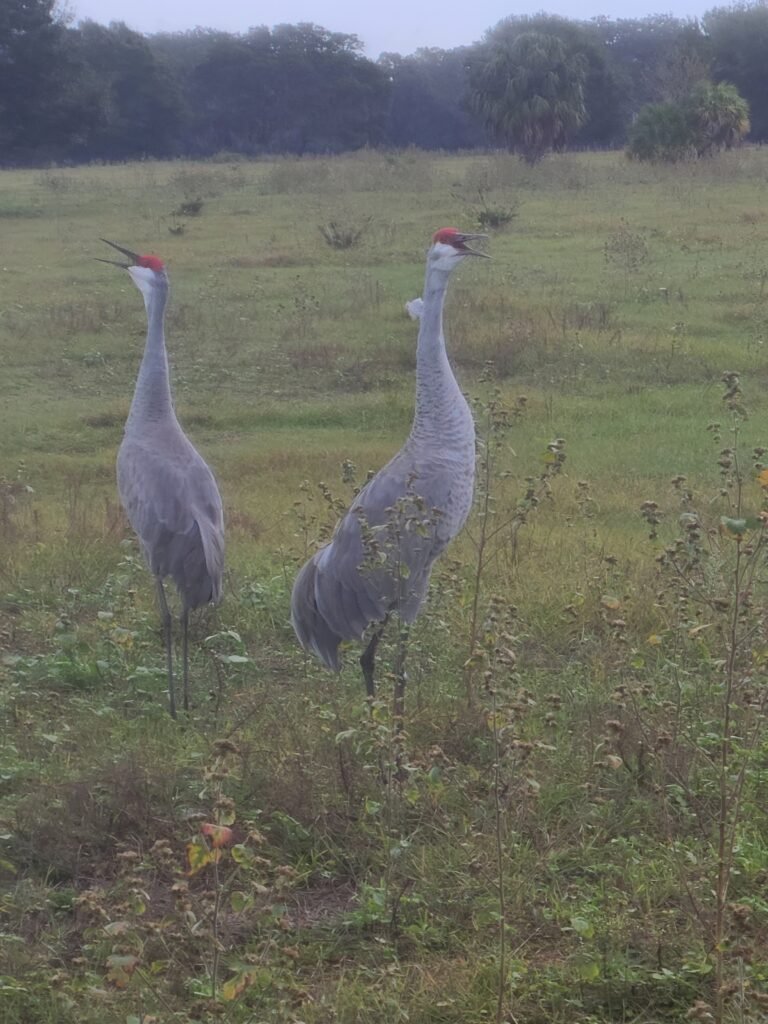Florida Sandhill Cranes Nesting Season
Florida Sandhill Cranes - Nesting Season
Florida Sandhill Cranes (Grus canadensis) are large grey heron-like birds, which are easily identified by the large red bald patch on their heads and their distinct rattling call. Florida Sandhill Cranes are often seen in small groups or pairs in and around freshwater wetlands. In Florida, we are entering their designated nesting season, which typically runs from January to August. If you are developing a site with freshwater, herbaceous wetlands, your permit approvals may require a Florida sandhill crane nest survey prior to and during construction. If active nests are identified, a buffer around the nest is required to ensure the birds aren’t disturbed by adjacent development activities. Nest monitoring is recommended to ensure the buffer is effective at minimizing disturbance to the birds and their young.
They are a non-migratory wading bird that nests within marshy freshwater wetlands, nests tend to be about two feet in diameter and are made with sticks, grass, and moss. Most often two eggs are laid per breeding season; both parents participate in building the nest, incubating their eggs, and raising their young. Young Florida Sandhill Cranes will be fed by their parents for their first few weeks and will follow the parents around until they become independent at around 9-10 months old. Nesting season typically begins in January and may extend through August. In Central and Southwest Florida, the average egg-laying date is usually between February 22 and March 3 and incubation lasts for 29-31 days.
Florida Sandhill Cranes are omnivorous and will eat a wide variety of foods including seeds, grain, berries, insects, worms, small reptiles and amphibians, mice, and crayfish, but unlike herons they don’t go after fish. They will root around with their heads down often in shallow wetlands, open fields, and occasionally will also forage in farmland.
As the Florida Sandhill Cranes spend much of their time, nest, and raise their young on the ground, their natural predators include mammals like foxes, raccoons, coyotes and panthers. However, the main threat to the species is the degradation or direct loss of habitat due to wetland drainage or filling, and conversion of their foraging grounds for development or agriculture.



